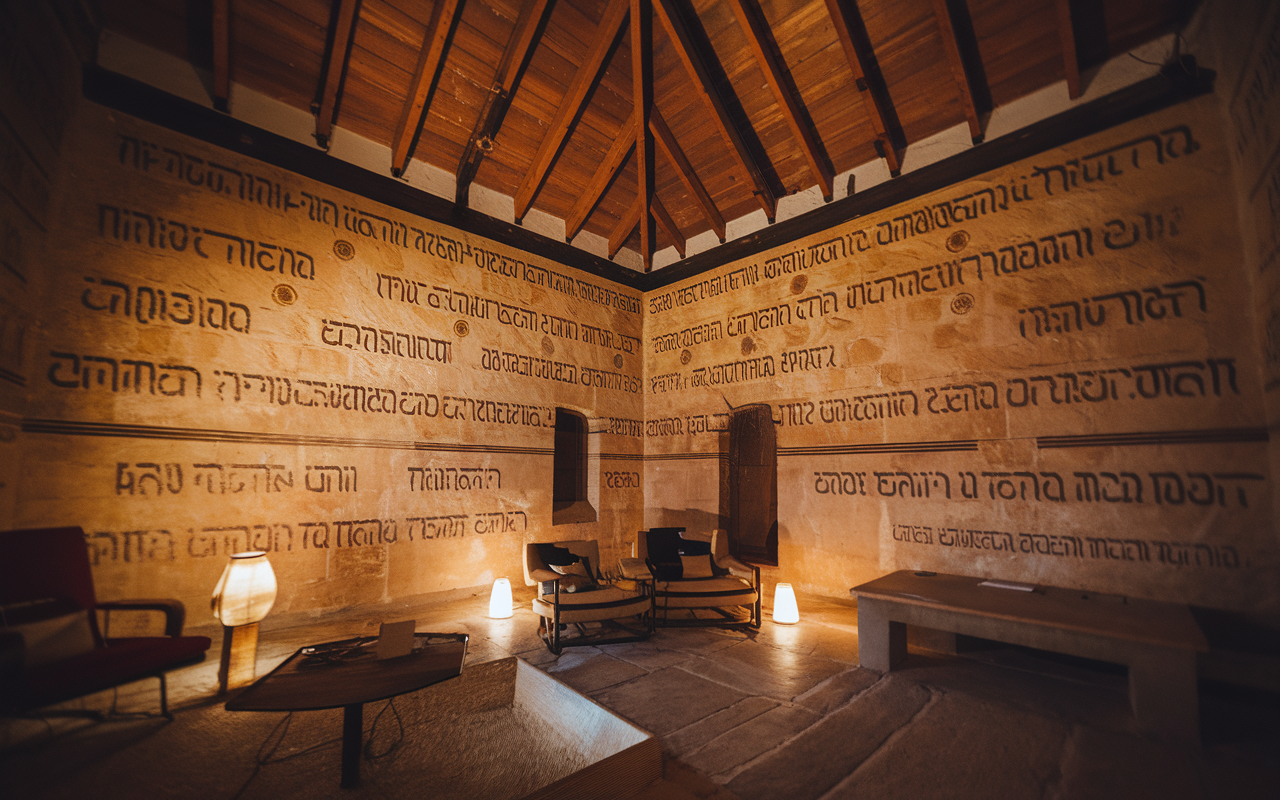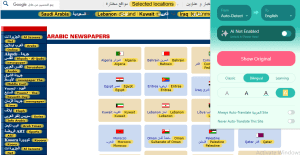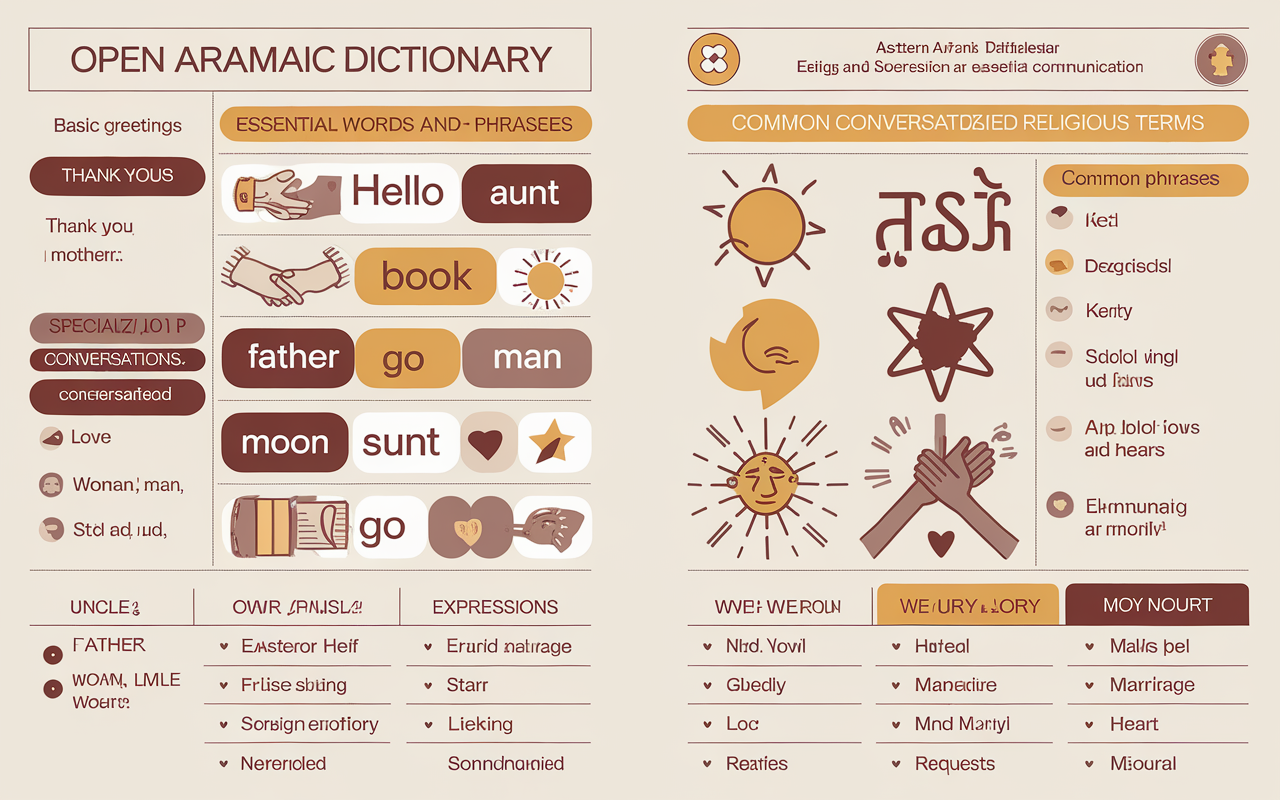English to Aramaic – Ancient Language Translation Guide
As I sit here, surrounded by the echoes of a bygone era, I feel deep reverence for Aramaic. This Semitic tongue has a rich history and cultural significance. It draws me into a world that feels both foreign and familiar.
Today, connecting with people from all over is easier than ever. But bridging language gaps is more important than ever. That’s where translation comes in, letting us cross language barriers and explore human expression.

This guide will take you on a journey through Aramaic’s world. We’ll explore its origins, historical significance, and modern uses. Whether you love languages, are a scholar, or just curious, you’ll find valuable insights and practical tips to unlock Aramaic’s secrets.
Key Takeaways
- Aramaic is the oldest languages, history nearly 3,000 years long.
- Aramaic is still key in many religious and cultural traditions.
- Professional translation services worldwide can help with English to Aramaic translations
- they also part of the Afro-Asiatic family and closely related to other Semitic languages.
- Aramaic alphabet and writing system is essential for accurate translation.
Understanding the Foundations of Aramaic Language
Aramaic is an ancient Semitic language with a rich history. It has deeply influenced many civilizations. This language has left a lasting impact on culture and remains important today.
For individuals interested in exploring not only modern languages but ancient ones like Aramaic, BiRead provides a unique bilingual reading experience that can support learning in context, fostering deeper understanding of historical and cultural texts.

Origins and Historical Development
The total of Aramaic script has 22 letters, each with its own writing shape and sound. back in time especially the 10th century BCE in the ancient Near East. It evolved from the Phoenician script.
Over time, Aramaic spread across empires like the Neo-Assyrian, Neo-Babylonian, and Persian. It became a key language of the ancient world.
The Role of Aramaic in Ancient Civilization
Aramaic was vital in ancient cultures. It was used for documents, laws, religious texts, and literature. Knowing Aramaic helped people understand ancient inscriptions and religious texts.
With tools like BiRead, modern readers can navigate similar bilingual texts effortlessly, facilitating an immersive exploration of both ancient and modern languages.
Modern Usage and Cultural Significance
Though not widely spoken, Aramaic remains culturally important. In Syria’s Maaloula, it’s still spoken. This shows Aramaic’s lasting impact.
Online courses and forums have sparked interest in Aramaic. They help people appreciate its history, language, and culture. For those exploring Aramaic online, BiRead offers a seamless experience with bilingual displays that support deeper engagement with culturally significant content.
Aramaic’s legacy fascinates scholars and linguists. It helps us understand human history and cultural exchange. By exploring Aramaic, we gain a deeper respect for our shared past.
The Aramaic Alphabet and Writing System
The Aramaic alphabet has a long history, dating back thousands of years. It was key for communication and keeping culture alive in the ancient Middle East. It started with the Aramaean people in the 11th century BC. Later, it became the common language of the area, affecting many writing systems, like the Hebrew alphabet today.
The Aramaic alphabet has 22 letters and is an abjad, focusing on consonants. Some letters also show long vowels, known as matres lectionis. This way of writing the Aramaic language greatly influenced later writing systems.
By using BiRead, users can view side-by-side translations, making it easier to study Aramaic alphabets and vocabulary in context, an invaluable resource for those keen on ancient language learning.

Aramaic calligraphy is famous for its Estrangelo font. This font is a standard for digital Aramaic texts. Its unique, angular style is still important for scholars and fans of the ancient language.
Today, the Aramaic alphabet’s impact is seen in many Middle Eastern writing systems. These include the Syriac alphabet for Christian Aramaic speakers and the Mandaic alphabet of the Mandaean religion. The Aramaic alphabet continues to influence the area’s language and culture.
Learning about the Aramaic alphabet is key for understanding ancient texts and history. By looking into its origins, growth, and use today, we appreciate Aramaic’s lasting impact on the Middle East’s culture and language.
English to Aramaic Translation Basics
Translating English to ancient Aramaic is a unique challenge. But, with the right tools, it’s both enlightening and rewarding. Understanding Aramaic vocabulary and phrases is key to effective communication. For translations of specialized terms or cultural phrases, BiRead’s Expert Translator offers tailored systems to enhance accuracy across platforms, making it easier to engage with intricate Aramaic texts.
Key Vocabulary and Phrases
The Aramaic dictionary has essential words and phrases. It covers basic greetings, common conversations, and specialized religious terms. Key words include hello, thank you, father, and mother.
It also has terms for uncle, aunt, woman, man, love, book, go, sun, moon, star, tree, hand, marriage, and heart.

The guide also lists common phrases and expressions. It covers emotions, actions, and requests. This helps with everyday communication. It also compares Eastern and Western Aramaic dialects, showing language nuances.
With BiRead, users can browse these vocabulary lists with side-by-side bilingual views, making it a convenient tool for building foundational Aramaic vocabulary.
Religious and Biblical Terms
The translation guide is great for those interested in Aramaic’s religious and biblical context. It lists Aramaic for key terms like God (Alah, Alaha), Jesus (Esho), and Christ (Mshiykhaa). It also includes other important religious and scriptural references.
| English Term | Aramaic Equivalent |
|---|---|
| God | Alah, Alaha |
| Jesus | Esho |
| Christ | Mshiykhaa |
Learning this vocabulary and terminology deepens understanding of Aramaic’s culture and history. It shows its ongoing relevance in religion and academia.
Essential Aramaic Grammar and Syntax
Learning Aramaic grammar and syntax is key for exploring this ancient language’s rich history. Scholars like Franz Rosenthal have given us great resources to understand Aramaic grammar.
With BiRead’s Learning Mode, grammar enthusiasts can study phrases in Aramaic without immediate translations, allowing for a more immersive experience that aligns well with Rosenthal’s structured approach to language learning.
Rosenthal makes learning easier by simplifying complex terms. His book is organized, helping learners follow a clear path to mastering Aramaic.
Learning Aramaic grammar involves reading, watching videos, and practicing. This approach ensures a deep understanding of the language’s details.
Rosenthal’s work shows Aramaic’s connection to Northwest Semitic languages. This background helps us understand its role in ancient Near Eastern cultures, especially during the Assyrian Empire.
| Key Aramaic Grammar Topics | Highlights |
|---|---|
| Pronouns | Personal, demonstrative, relative, and interrogative pronouns |
| Verbs | Conjugations, tenses, voices, and moods |
| Nouns | Declension, gender, number, and case |
| Adjectives | Agreement with nouns, comparison, and derivation |
| Conjunctions and Prepositions | Coordination, subordination, and spatial/temporal relationships |
| Adverbs and Particles | Modification of verbs, adjectives, and other adverbs |
| Numerals | Cardinal and ordinal numbers, fractions, and numerical constructions |
Exploring Aramaic grammar and syntax reveals the language’s historical importance. It opens a window to a fascinating cultural and linguistic heritage that still captivates scholars and enthusiasts today.

Online Resources and Translation Tools for English to Aramaic
Learning the ancient Aramaic language is easier than ever thanks to online resources and tools. You can find digital dictionaries and interactive learning platforms. These make understanding and translating English to Aramaic more accessible than ever.
BiRead’s bilingual reading capabilities complement these online resources, offering a unique digital tool for anyone embarking on the journey of understanding Aramaic through bilingual immersion.
Digital Dictionaries and Databases
Digital dictionaries and databases are key for learning Aramaic. Sites like AIM (Assyrian Information Management) have vast Aramaic lexicons. They help you explore vocabulary and grammar. Also, Peshitta forums offer discussions and resources for those studying Aramaic texts, especially in religious or academic settings.
By using BiRead alongside these dictionaries, users can easily verify translations within their web browser, ensuring more accurate and contextually relevant language learning experiences.
Learning Platforms and Study Materials
- Aramaic Academy offers online courses and tutorials for all skill levels.
- Aramaic Language Tutor makes learning fun with interactive apps.
- Aramaic-Greek.org has grammar guides, translation exercises, and cultural insights.
For more advanced learners, BiRead’s tailored translation systems further enhance language immersion by providing bilingual subtitles on platforms like YouTube, making it easier to engage with Aramaic content.
Translation Software and Apps
For quick translations, there are many digital tools. PoliLingua has 10 Aramaic translators who have worked on 15 projects. They’ve translated over 25,000 Aramaic words. Mobile apps like Aramaic Translator also offer translation on the go.
The internet is full of Aramaic learning resources. It lets people start an exciting journey of learning this ancient language. Whether you’re interested in religious texts, historical research, or just learning for fun, there’s a wealth of tools and materials online.
BiRead’s bilingual display and Expert Translator make it a valuable addition to this toolkit, providing users with a seamless way to engage with and translate Aramaic texts right from their browser.
Conclusion
Aramaic is an ancient Semitic language with a big role in the Near East’s history. It was a key language in ancient times and is still used today in religious and scholarly areas. It’s a language that’s both fascinating and important to learn about.
If you’re into biblical studies, linguistics, or just love ancient languages, learning Aramaic is rewarding. It gives you a deep look into the culture and beliefs of the region. Aramaic’s rich history, different dialects, and ongoing importance make it worth exploring.
This guide has shown you the basics of the Aramaic alphabet, grammar, and how to translate it. By learning these, you’ll start to understand this semitic language and its aramaic culture better. So, dive into this journey and see the beauty and importance of Aramaic for yourself.
With BiRead’s advanced translation and learning tools, users can dive deeply into Aramaic and other languages, enhancing their understanding of ancient and modern texts alike. Whether for academic purposes or personal interest, BiRead facilitates a richer language exploration experience.
FAQ
What is Aramaic and why is it important?
Aramaic is an ancient Semitic language. It was key in ancient civilizations. It’s important in religious studies and for understanding the Bible.
Where is Aramaic still spoken today?
Aramaic is spoken in Maaloula, Syria. It’s one of the few places where it’s still a native language.
What is the Aramaic alphabet like?
The Aramaic alphabet is different from the English alphabet. It uses the Estrangelo Font for digital texts. Knowing the alphabet is key for accurate translation and writing.
What are some common Aramaic words and phrases?
The guide lists translations for common words and phrases. This includes religious terms like “God” (Alah, Alaha), “Jesus” (Esho), and “Christ” (Mshiykhaa). It also covers basic greetings.
What resources are available for learning and translating Aramaic?
The guide points out online resources. These include digital dictionaries, databases, learning platforms, and translation software/apps. AIM (Assyrian Information Management) and Peshitta forums are mentioned.
Source Links
- How to Translate Aramaic: Techniques – https://www.polilingua.com/blog/post/translate-aramaic-english-features-aramaic-language.htm
- Aramaic Resources – Daily Dose of Aramaic – https://dailydoseofaramaic.com/aramaic-resources/
- An Introduction to the Aramaic Alphabet – https://zondervanacademic.com/blog/aramaic-alphabet
- Aramaic alphabet – https://en.wikipedia.org/wiki/Aramaic_alphabet
- Aramaic language and alphabet – https://www.omniglot.com/writing/aramaic.htm
Discover Aramaic’s secrets with Biread.
Explore ancient texts effortlessly with bilingual tools.
Try Biread Free





